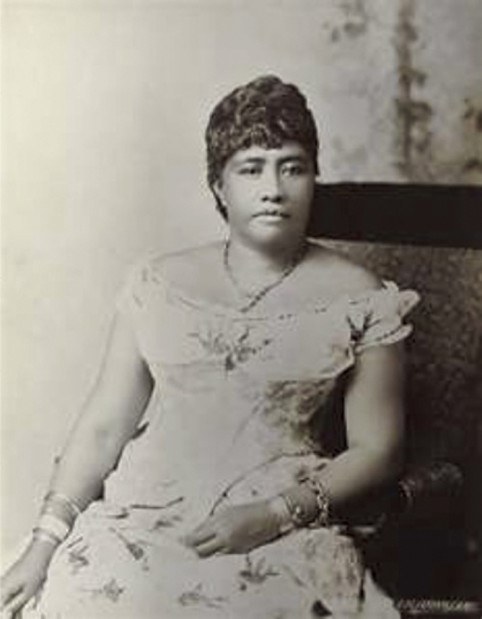In midsummer of 1889, Princess Lili‘uokalani made the second of at least three visits to Kaua‘i. Her first trip to Kaua‘i occurred in September 1881, when she’d been the guest of Paul Puhiula Kanoa, Kaua‘i’s governor from 1881 to 1886.
In midsummer of 1889, Princess Lili‘uokalani made the second of at least three visits to Kaua‘i.
Her first trip to Kaua‘i occurred in September 1881, when she’d been the guest of Paul Puhiula Kanoa, Kaua‘i’s governor from 1881 to 1886. She stayed at Kanoa’s Niumalu home, which today is the Achi family residence. At Kilauea, she visited the newly built Kilauea Sugar Plantation railroad.
Lili‘uokalani would also tour Kaua‘i as queen in January 1891 in the company of William Hyde Rice, whom she would appoint to govern Kaua‘i in 1892.
During her stay, Lili‘uokalani toured the island, and at a grand farewell lu‘au prepared for her by Rice at Kalapaki, Rice brought her drinking water from a now-vanished sacred spring at Kipukai.
On her 1889 visit, Lili‘uokalani stayed once again at Kanoa’s residence, toured Kaua‘i and paid a special visit to Francis Gay’s home outside Waimea.
New Zealand-born Gay had immigrated to Hawai‘i in 1863 with his grandmother, Eliza Sinclair, and other members of the Sinclair, Robinson and Gay families.
By 1865, his grandmother had purchased Ni‘ihau from Kamehameha IV and the Makaweli ahupua‘a from Victoria Kamamalu.
On those Makaweli lands, the Gay & Robinson Sugar Plantation, formed in 1889 as a partnership between Gay and his cousin, Aubrey Robinson, produced sugar until 2009.
Lili‘uokalani was particularly interested in learning from Gay the fate of three pairs of Hawai‘i O‘o birds (Moho nobilis) she’d previously sent to Gay. The yellow feathers of the Hawai‘i O‘o, endemic to the Big Island, had been used by Hawaiians in making feathered cloaks and capes.
Two pairs had been lost, but the third was thriving near Gay’s home.
All four species of ‘O‘o — the Kaua‘i ‘O‘o (Moho braccatus), O‘ahu ‘O‘o (Moho apicalus), Bishop’s ‘O‘o (Moho bishopi) and the Hawai‘i ‘O‘o — are now extinct.


